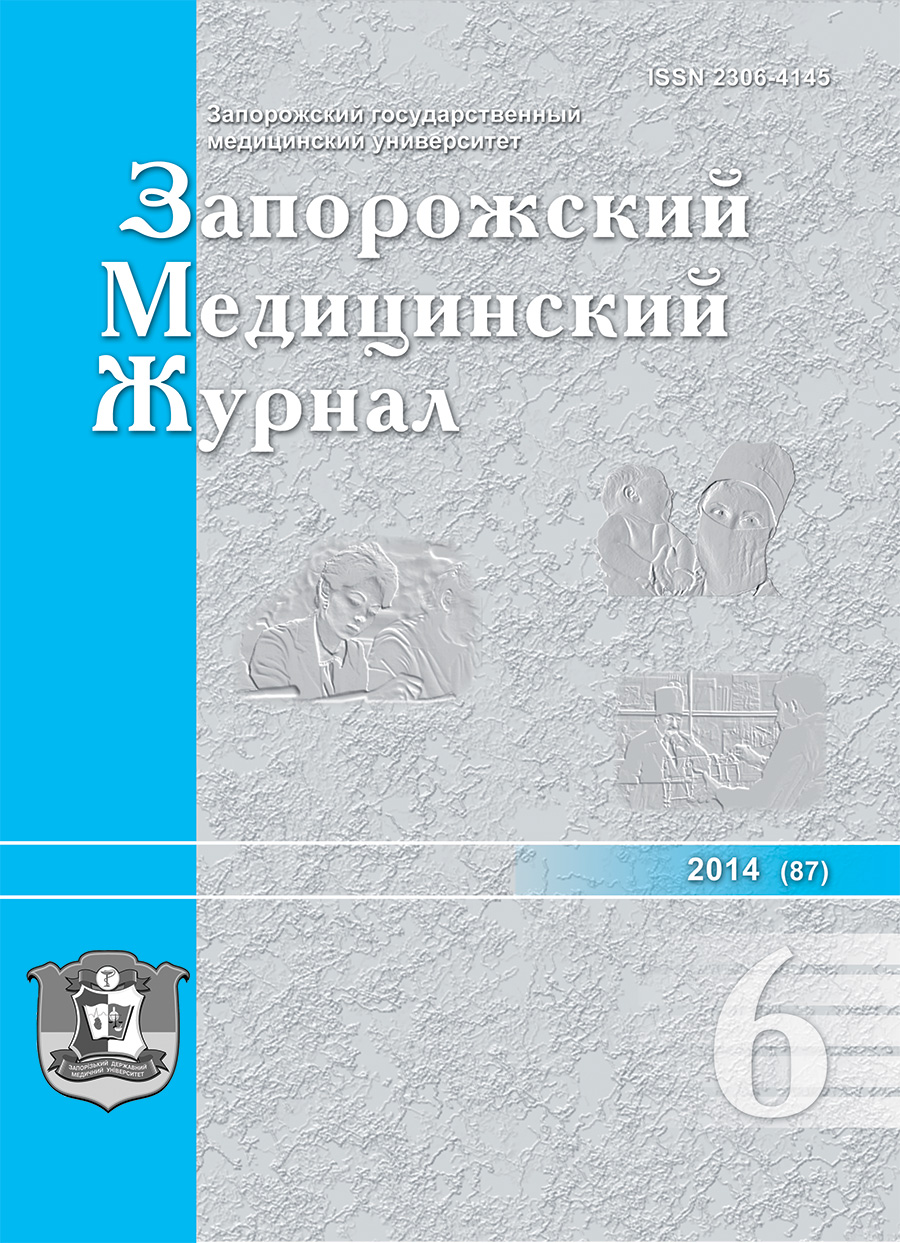Endovascular techniques in the treatment and prevention of cerebrovascular pathology
DOI:
https://doi.org/10.14739/2310-1210.2014.6.35766Keywords:
Saccular Aneurysms, Carotid Stenosis, Hemorrhage, Stroke, Endovascular Procedures, Community HospitalsAbstract
Aim. Cerebrovascular disease (CVD) is one of the most pressing health and social problems throughout the world and in particular in Ukraine. Specialized care for patients with cerebrovascular disease is fully possible on the basis of the regional hospital in the Zaporozhye region.
Methods and results. 116 patients with saccular aneurysms of the brain were examined from February 2009 to September 2014. 102 among them had acute phase of hemorrhage, 11 patients was with cerebral AVM. 35 patients had pathology of the brachiocephalic arteries. Presence of the powerful diagnostic medical facility base along with highly specialized departments (neurosurgery, vascular surgery, department of prevention and treatment of stroke, department of angiography and endovascular surgery) allows you to identify in the short term pathology and provide appropriate surgical or therapeutic support.
Conclusion. This significantly improves the outcome of patients with different types of cerebrovascular disease.
References
Mishchenko, T. S. (2008) Epidemiolohiia nevrolohichnykh zakhvoriuvan v Ukraini [Epidemiology of neurological diseases in Ukraine]. Нейро News, 3, 76–77. [in Ukrainian].
Smolanka, V. I. (2007) Suchasna taktyka likuvannia subarakhnoidalnykh krovovylyviv [Modern treatment in subarachnoid hemorrhage]. Zdorovia Ukrainy ХХІ storichchia, 1, 45 [in Ukrainian].
(1997) Clinical Neurology and Neurosurgery. llth International Congress of Neurological Surgery. Abstracts of Free Papers., 99(l.1).
Tamatani, Sh., Ito, Ya., Abe, H., et al. (2002) Evaluation of the stability of aneurysms after embolization using detachable coils: correlation between stability of aneurysms and embolized volume of aneurysms. Amer. J. Neuroradiol., 23, 762–767.
Svistov, D. V., Kandyba, D. V., Savello, A. V. (2002) Arteriovenoznye mal'formacii golovnogo mozga: klinika, diagnostika, kompleksnoe lechenie [Arteriovenous malformations of the brain: clinical features, diagnosis, comprehensive treatment]. Sbornik uchebnyh posobij po aktual'nym voprosam nejrokhirurgii (Eds. V. E. Parfenov, D. V. Svistov). (pp. 199–260). Saint Petersburg : Foliant [in Russian].
Rosen, D. S., Macdonald, R. L., Huo, D., et al. (2007) 7 Intraventricular hemorrhage from ruptured aneurysm: clinical characteristics, complications, and outcomes in a large, prospective, multicenter study population. J. Neurosurg, 107(2), 261–265. doi: 10.3171/JNS-07/08/0261.
Stapf, C., Mohr, J. P., Pile-Spellman, J. et al (2001) Epidemiology and natural history of arteriovenous malformations. Neurosurg. Focus, 11, 5. – e1.
Guglielmi, G., Vinuela, F., Dion, J., Duc Kwiler, G. (1991) Electrothrombosis of saccular aneurysms via endovascular approach. Part 2. Preliminary clinical experience. J. Neurosurg, 75, 8–14. doi: 10.3171/jns.1991.75.1.0008.
Downloads
How to Cite
Issue
Section
License
Authors who publish with this journal agree to the following terms:
Authors retain copyright and grant the journal right of first publication with the work simultaneously licensed under a Creative Commons Attribution License that allows others to share the work with an acknowledgement of the work's authorship and initial publication in this journal. 

